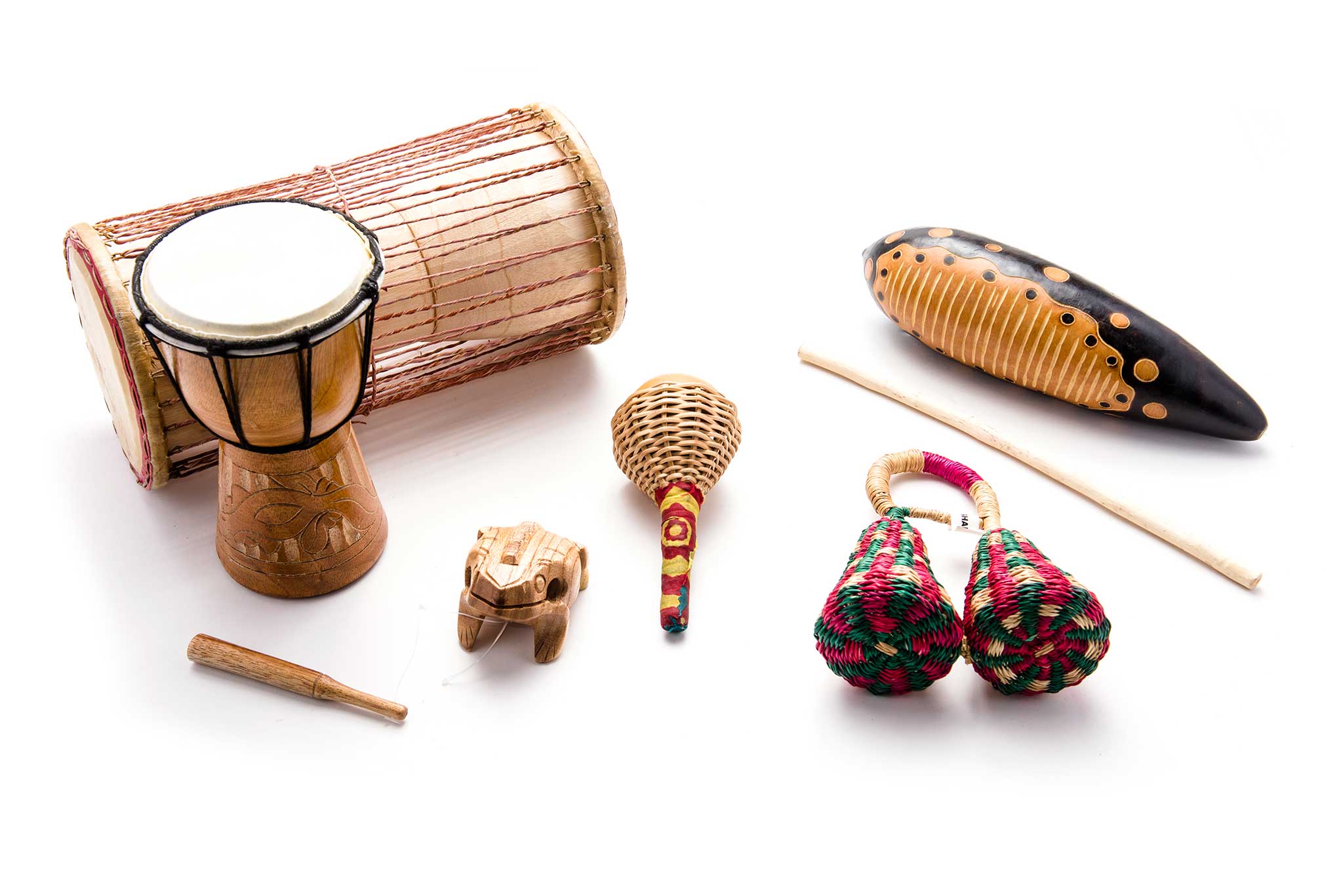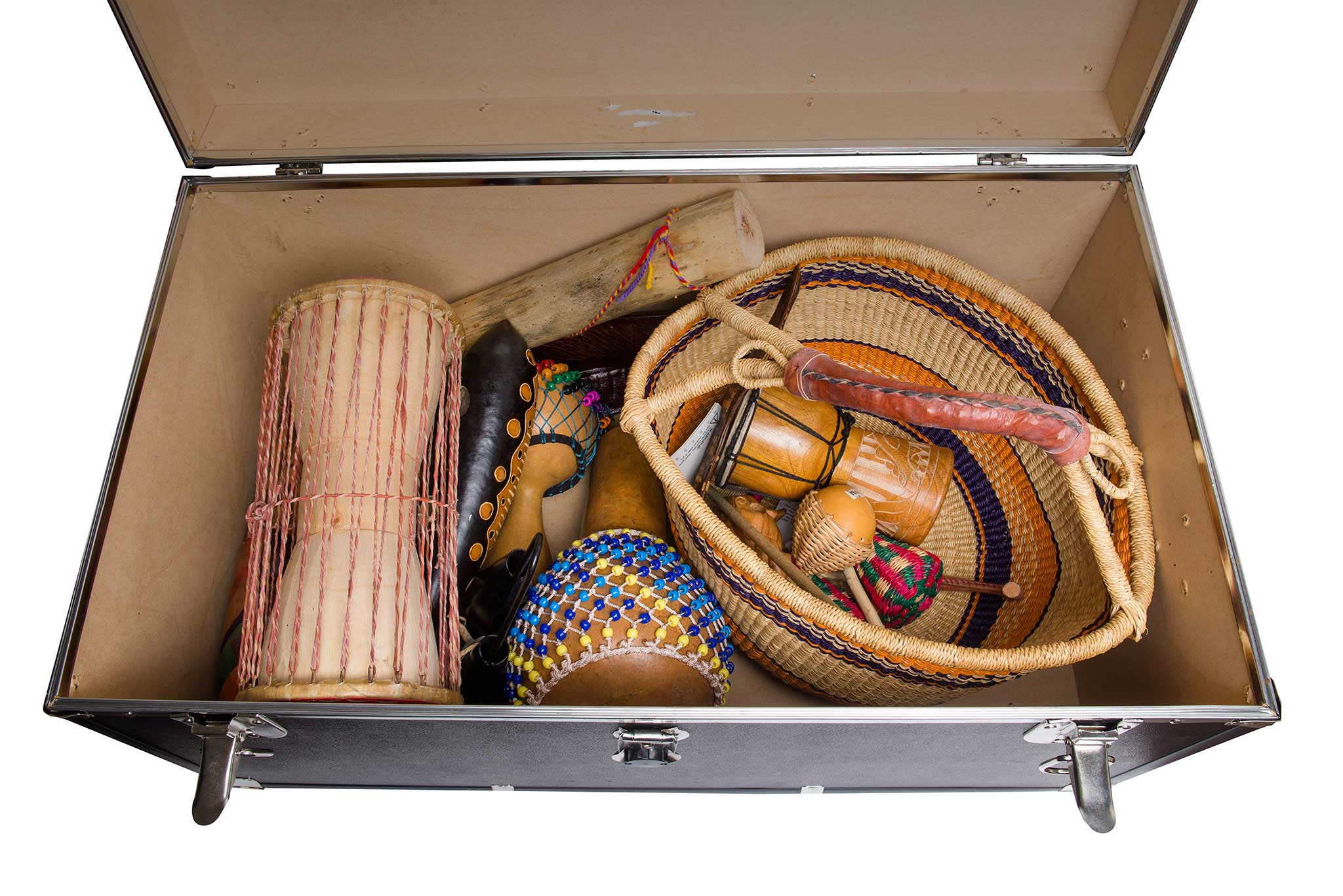Bragg Boxes
The Charleston Museum is proud to introduce its new Bragg Box program. Bragg Boxes are traveling trunks that can be sent out to schools to be used in classrooms and are designed to expand the educational outreach of the Museum’s collections. Bragg Boxes feature artifacts, replicas, images, documents, lesson plans, and activities which are combined to offer arts-infused, curriculum-based programming for students.
This ongoing project has its roots in the Museum’s history. One of the Museum’s former Directors, Laura Bragg, revolutionized museum education programming in the early 1900s. Ms. Bragg believed that one’s inability to come to the physical museum should not prohibit anyone from benefitting from the Museum’s collection and educational resources. To make information more accessible, she came up with the original idea of “Bragg Boxes” using items from the Museum’s collection. In 1928, the Museum sent Bragg Boxes to every school in the county, including those in rural areas. The Charleston Museum will now once again help local schools benefit from Bragg Boxes.
The new and improved Bragg Box program features trunks with five unique themes: Native American Know-How, Coming to Carolina, The Black Majority, Colonial Charleston, and The British are Coming. All five trunks include artifacts, replicas, documents, images, and activities that relate to school textbooks, South Carolina Social Studies Academic Standards, and Visual and Performing Arts Standards. All items in the trunks can be used in conjunction with the lesson plan included or in a way that supplements teachers’ existing lesson plans. The Bragg Box lesson plans include objectives, standards, vocabulary, background information, procedures, and activities. While each box has recommended grade levels, the trunks can be adapted for use with different ages. “This is an excellent way for the Museum to expand its outreach to the community,” notes Carl Borick, the Museum’s Director. “The program provides an opportunity for America’s First Museum to reach these students, who might not otherwise be able to take a field trip due to time constraints, transportation concerns, or funding limitations.”
This project is funded in part by the South Carolina Arts Commission which receives support from the National Endowment for the Arts. This grant has allowed trunks to be distributed to schools for free during the 2017-2018 school year. So far, over 2,000 students have benefited from the Bragg Boxes, including students from four Title I schools in just over a month since the program launched. “I’ve found that the Bragg Boxes have been a wonderful resource in my classroom,” says teacher Laura Mohan of Mt. Zion Elementary School. “They have helped me plan more engaging social studies lessons that also foster students’ literacy skills. My students have really looked forward to discovering each part of a new Bragg Box.”
To book a Bragg Box at your school, please contact Stephanie Thomas, Chief of Education, at [email protected] or 843-722-2996 ext. 236.
Native American Know-How (K – 2)
Native Americans were the first people to settle in the United States. They lived a vastly different lifestyle than we do today. Explore how natural resources shaped daily life with lessons on jewelry, clothing, music, foodways and gaming. This Bragg Box includes a headdress, animal skins, arrows, a breastplate, a turtle-shell rattle, and more.
Coming to Carolina (3rd, 4th, 8th)
Investigate families that left their home countries to settle in Carolina. Through letters, maps, and artifacts discover the many issues they faced coming to this new world. Activities include mapping skills, analyzing letters, creating tableau scenes, and more.
The Black Majority (3rd, 4th, 8th)
Many groups of people came to Carolina from around the world during the colonial period. Many of them came to escape religious persecution or to gain new or better opportunities. Of all the different cultural groups that came to Carolina, the largest came from Africa. However, this group of people did not come by choice. They were brought to Carolina as slaves. This Bragg Box covers the definition of slavery, the reason African slaves were used, the daily life of slaves, and their cultural contributions to the area.
Colonial Charleston (3rd, 4th, 8th)
This Bragg Box covers the daily life of those living in Charleston around the 1750s. Students will compare the lives of children today to children of that time period, as well as compare daily lives of the different social classes. Activities include playing colonial games, trying on clothing, and learning the skills of a potter.
The British are Coming (3rd, 4th, 8th)
The British ruled over the colonies from afar, but by the 1760s things began to change. Taxes caused issues between colonists and the British, causing revolt and the start of the American Revolution. This Bragg Box deals with taxes, protest, battles, and the signing of the Declaration of Independence. Students will tax their class mates, air their grievances to their teacher, and participate in an activity centered on the song Yankee Doodle.



